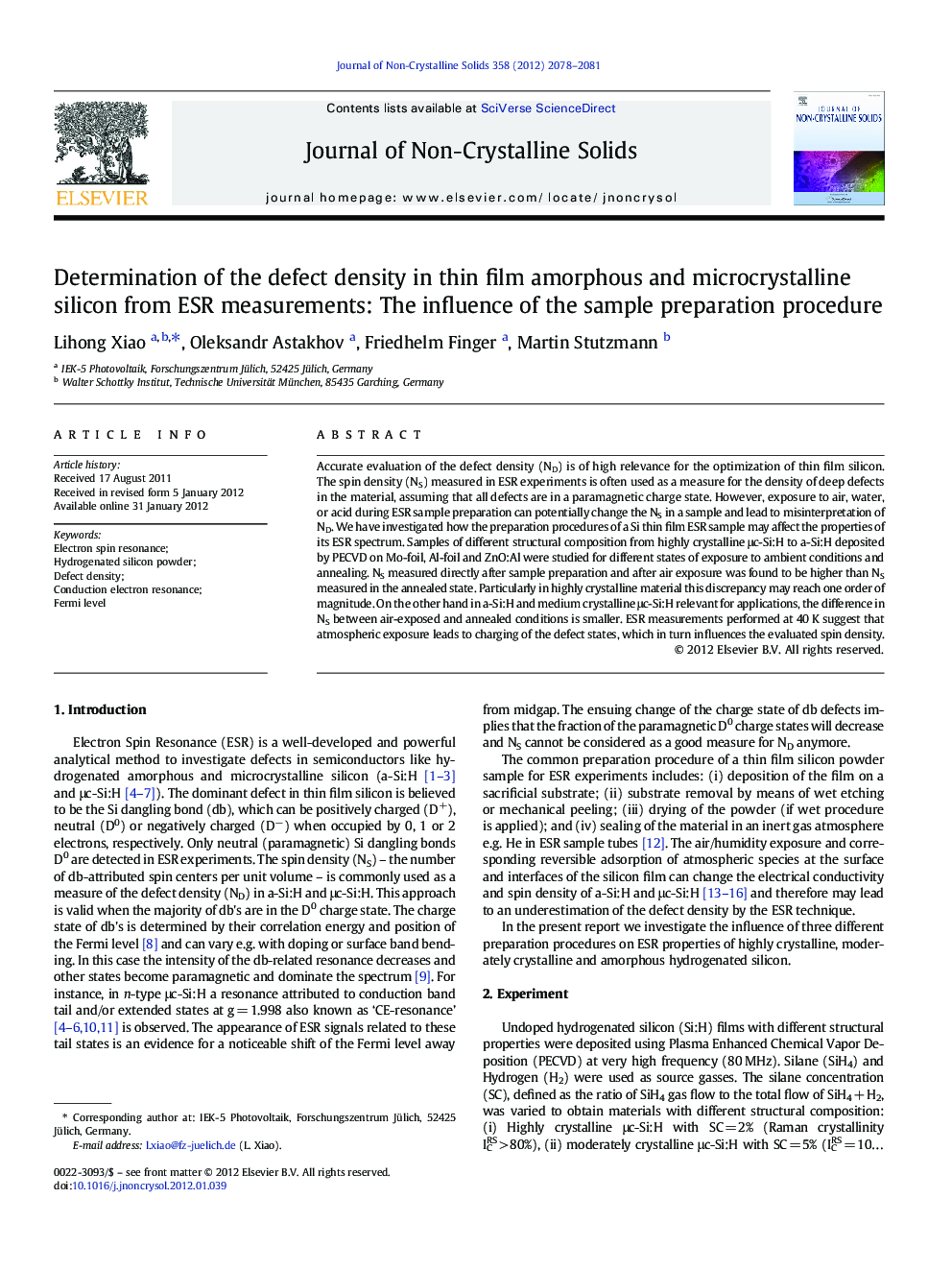| Article ID | Journal | Published Year | Pages | File Type |
|---|---|---|---|---|
| 1481672 | Journal of Non-Crystalline Solids | 2012 | 4 Pages |
Accurate evaluation of the defect density (ND) is of high relevance for the optimization of thin film silicon. The spin density (NS) measured in ESR experiments is often used as a measure for the density of deep defects in the material, assuming that all defects are in a paramagnetic charge state. However, exposure to air, water, or acid during ESR sample preparation can potentially change the NS in a sample and lead to misinterpretation of ND. We have investigated how the preparation procedures of a Si thin film ESR sample may affect the properties of its ESR spectrum. Samples of different structural composition from highly crystalline μc-Si:H to a-Si:H deposited by PECVD on Mo-foil, Al-foil and ZnO:Al were studied for different states of exposure to ambient conditions and annealing. NS measured directly after sample preparation and after air exposure was found to be higher than NS measured in the annealed state. Particularly in highly crystalline material this discrepancy may reach one order of magnitude. On the other hand in a-Si:H and medium crystalline μc-Si:H relevant for applications, the difference in NS between air-exposed and annealed conditions is smaller. ESR measurements performed at 40 K suggest that atmospheric exposure leads to charging of the defect states, which in turn influences the evaluated spin density.
► We prepare ESR powder samples of a-Si:H and μc-Si:H in different procedures. ► Adsorption of atmospheric species leads to recharging of the dangling bond states. ► Annealing results in shift of Fermi level from midgap towards the conduction band. ► Desorption of atmospheric species leads to underestimation of db density in μc-Si:H.
